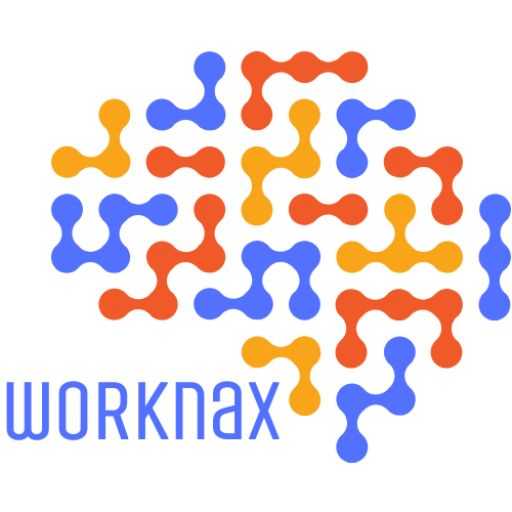Anúncios
fast learning success stories open the door to clear proof that quick progress is possible in school, at work, and in life.
What would change for you if you could copy a reliable way to build skills?
You will read about open education that reached millions. MIT OpenCourseWare and MITx made thousands of courses available. Learners from many places used those resources to grow.
Meet people like Battushig Myanganbayar, a boy who aced an MITx class and later earned MIT degrees. Meet Tetiana Herasymova, who studied from a bomb shelter and then taught at a university.
This section explains why these stories matter today. It shows how on‑the‑job learning and open programs combine into a clear program you can use.
Expect practical guidance on what to learn next, and a friendly view of the kinds of habits that move you toward a better future.
Key Takeaways
- Real examples show fast gains are achievable in many parts of life.
- Open education and workplace training work together in a practical program.
- Short, focused routines and the right courses give the biggest returns.
- Companies that invest in growth see higher profitability and retention.
- You can use these approaches today to shape your future path.
Introduction: fast learning success stories that show what to learn and how to start
Here are practical snapshots that point you to useful skills and how you can start right away. The pieces below connect school and work with modern online programs. They make the path from curiosity to measurable progress clear.
Why these accounts matter in school, work, and life
You care about results in school and at your job. Most development—about 70%—happens on the job. Companies that invest in training see +11% profitability and employees stay longer when they get support.
What you’ll learn from past and present journeys
This short tour shows how students and professionals mix on‑the‑job practice with targeted online programs. MIT OpenCourseWare offers 2,500+ free courses and MITx runs hundreds of MOOCs used by millions today.
You’ll learn simple ways to start, use your time well, and build confidence through routines that solve real problems. See how one small step can make a visible difference in a year of steady effort.
- Clear examples of people who sped up skill growth
- Practical programs that fit busy schedules
- Actionable steps to start your own journey
fast learning success stories
Measured improvement starts with one project, one plan, and daily attention. Define “fast” as steady, focused study that turns into action at school or at work—not cramming or shortcuts.
What makes a story fast without cutting corners
Pick one class, one program, or one project and set weekly targets. Short sessions with clear goals keep your focus and prevent overload.
Combine structured online content like MITx or OCW with hands‑on tasks so each lesson has a direct use case. This mix raises skill retention and gives you work‑ready results.
Signals of real progress: skills, confidence, and results
Watch for concrete signals. You finish tasks faster, you make fewer errors, and your instructor or manager trusts you with harder assignments.
- You track progress with simple metrics: tasks shipped, quiz scores, or peer feedback.
- You apply what you learn the same day in the classroom or on the job.
- You build confidence by stacking small wins and reflecting weekly on what to change next.
From high school curiosity to MIT-level mastery
Start in high school by asking which topics spark your curiosity and testing them with open course videos. Use those moments to see what fits your goals and to decide what to start next.
Open learning pathways: OCW, MITx, and MicroMasters
MIT OpenCourseWare offers 2,500+ free courses and MITx runs hundreds of MOOCs. Learners like Samip Jain began in high school using open videos. Abigael Bamgboye used an MITx MicroMasters to grow into graduate-level work.
Key takeaways for students and self-paced learners
- Pick one course that matches your interest—programming, calculus, or data—and set weekly time blocks. Work in short sessions to build attention and focus.
- Use a simple routine: watch lectures, do problem sets, and finish a small class project each week. Apply the new skills in a tiny real project and ask a teacher for feedback.
- Consider stackable pathways like MicroMasters to turn your online progress into recognized credentials that help with college or career moves.
Quick plan: make a short journey map with a course list, weekly goals, and checkpoints. Review it each week and adjust your time so you keep steady progress.
MIT learner snapshots that shorten the path from class to career
Short profiles below show how a single course or program changed life paths for learners around the world.
The boy genius of Ulan Bator: perfect score to MIT degrees
Battushig Myanganbayar earned a perfect score in MITx Circuits and Electronics and later completed an MIT BS and MS. His story shows how one course can spotlight talent and open college and career doors.
Studying across time zones: earning credentials while working in Africa
Robert Rains used a stackable MicroMasters to move from online class work to an MIT master’s while he kept his job and traveled. You can follow a similar program path and fit study into irregular time blocks.
Learning during crisis: passing exams from a bomb shelter
Tetiana Herasymova passed MicroMasters exams in May 2023 under extreme challenge and then taught mathematics and programming. Her example shows focus and steady task completion matter most.
High schooler applies calculus to real health challenges
High school student Dustin Liang used MITx calculus to estimate blood cell counts during treatment and aims for medicine. This shows how course concepts turn into useful skills you can apply now.
- Try this model: pick one course, finish core tasks, apply a small project at school or work, then share results for feedback.
- Consistent years of study, as Andrea Henshall and Emmanuel Kasigazi show, compound into deeper skills and clearer career progress.
Workplace learning that moves you up faster
When your day-to-day work becomes the classroom, you shorten the time between practice and results. On-the-job study pairs small lessons with real tasks so each new skill gets used immediately.
Why it works: 70% of learning happens on the job
Most growth happens at work: about 70% of workplace learning takes place during real tasks. That means faster feedback, quicker fixes, and clearer progress.
Business impact: +11% profitability and higher retention
Companies that invest in a training program often see an +11% profitability boost. Ninety-four percent of employees are more likely to stay where they get support.
- You lean into on-the-job practice because it gives quick feedback and steady progress.
- Combine short lessons with tasks so each skill is applied the same day.
- Make learning part of team rhythm: weekly goals, short reviews, and small wins that add up over the year.
Tip: Start with one skill focus per week, one practice block per day, and one quick feedback chat. For evidence and program ideas, see the workplace learning report.
Marketing intern to manager: a hands-on learning playbook
Move from intern tasks to managerial responsibility with a clear, hands‑on playbook you can copy. Sarah Martinez used this path and reached Marketing Manager in 18 months.
How she did it: she paired mentorship with behavior-focused feedback and targeted courses. Weekly one‑on‑ones guided her next steps. She applied course lessons in the same week to real projects.
Mentorship, feedback, and targeted online courses
Set a mentorship program with weekly one‑on‑ones and clear goals. Use feedback that targets behaviors, not personality. That helps you ship work faster and cut edits.
Results you can model in your own program or class
- Pick one mentor and agree on monthly role expectations. Track progress each month.
- Take one or two practical courses (analytics, automation) and apply lessons immediately.
- Present short updates weekly to train attention and build confidence with your manager.
- Use behavior-focused feedback to improve ability to deliver work with fewer revisions.
- Commit to short sprints of hard work, reflect, then ask for more responsibility within the year.
- Data point: 68% of interns secure full-time roles.
- Engagement: 80% of employees who get regular, meaningful feedback are fully engaged.
Copy this playbook in your school or work program. Small steps and steady progress in months add up to real role change.
Construction to IT: turning problem‑solving into a new career
You can turn hands‑on construction habits into practical IT troubleshooting skills. Many people in trades already have the core traits employers want: methodical work, safety focus, and clear problem solving.
Certifications, real projects, and translating existing skills
Start by mapping your strengths. Inventory skills like troubleshooting, attention to detail, and safety routines and match them to support tasks.
- Enroll in a structured program such as Goodwill’s LIFT IT to get guided study and hands-on labs.
- Schedule regular study time and work toward CompTIA A+ while building small portfolio projects (home network, ticket simulations).
- Apply for help-desk roles during study so you gain paid experience while you earn certifications.
“Jason Aisbitt moved through a LIFT IT program, earned CompTIA A+, took a Tier 1 role at TekExperts, and saw a 28% pay increase—then advanced to Tier 2 and mentor roles.”
Expect a steep but doable challenge in the first year. Use mentors, peer forums, and tracked metrics—tickets closed, first-contact resolution, and user feedback—to measure progress and build confidence.
- Keep options open: add a second certification in year one and take a stretch project to prove readiness for promotion.
- Entry-level Help Desk roles average about $57,910 and IT jobs are projected to grow strongly, so the time you invest can pay off in months and years.
Cashier to store manager: building leadership and confidence
Many retail careers start at the register, and a clear program can turn day-to-day tasks into leadership chances.
Maria Rodriguez moved from cashier to manager by combining job shadowing, mentorship, and short online business courses. Her path shows repeatable steps you can copy in your store.

Job shadowing, data literacy, and better team routines
Begin with a leadership program that pairs job shadowing with focused lessons in scheduling, communication, and basic finance.
- Practice data literacy weekly: review sales and inventory reports and use that info to adjust staffing and product placement.
- Run short team activities to tighten service habits and cut errors; track customer feedback to show concrete progress.
- Ask for a mentor manager and set monthly goals to build your ability to handle openings, closings, and daily operations.
- Lead small projects first—revise a checklist—then scale to larger events like promotions to grow your confidence.
You prove improvement with metrics: on-time shifts, lower shrink, and higher conversion rates. Share these wins with your district leader to open promotion talks.
“Start small, track results, and let clear data show your readiness to run the store.”
Tip: Treat school-style study and on-the-job practice as a single path. Short courses plus regular shadowing sharpen the skills and attention you need to move up in a few years.
Engineer to leader: learning to lead through projects
Start by owning a modest migration or integration so you can practice planning, budgeting, and people work in one clear effort.
David Chen grew into leadership by leading a system migration. He used scope decomposition, budgeting, scheduling, risk, and change control as on-the-job training.
You begin small: take a project lead role to practice delegation, prioritization, and concise status updates.
- Break work into tasks, assign owners, and estimate time and risk to build planning skills.
- Run predictable rituals — weekly standups, demos, and retros — to raise team confidence.
- Treat communication like a class: write short updates, listen, and clarify decisions fast.
- Link technical deliverables to quarterly goals and shared dashboards to show business impact (teams using quarterly goals can see a 31% increase in returns).
- Model hard work in focused bursts, protect deep work time, and recognize wins publicly to lift morale (69% of employees work harder when appreciated).
Stretch your ability by asking for cross-team tasks and feedback. That challenge builds the skills and confidence that move you from engineer to leader in months and years.
High school grad to certified professional: a faster path through programs
If you finished high school and want a credential that pays, a short, accredited program can get you there in under a year.
Pick a program that lists job placement and externships. Olga Preciado used WIOA support to train at Tri‑Cities Dental Assisting School, graduated top of her class in Nov 2022, earned certification, and now earns $23/hour with benefits.
Apply for support like WIOA to cover tuition and essentials. That reduces financial pressure and lets you focus on study and hands‑on practice.
- Choose an accredited program with strong placement so you can qualify for work within a year.
- Mix classroom lessons with clinical practice to build real skills and steady confidence.
- Plan weekly study blocks, lab practice, and exam prep and track unit tests to see progress.
- Ask instructors about stackable credentials and externship tips that help you stand out.
Tip: Lean on mentors, show hard work through attendance and assignments, and ask for feedback to close gaps quickly. Consider college later, but focus first on getting certified and earning while you keep improving.
“Many employers now prioritize experience over degrees; 55% have removed degree requirements.”
What to learn first: core skills that speed up progress
C begin with routines that sharpen attention, memory, and processing so your time in a class or on the job pays off quickly. Pick simple drills you can do each day and use your classroom or work tasks to test gains. Small practice blocks often change how you handle real problems.
Focus, memory, and processing skills you can train
Train attention with 10‑minute timed drills—set a timer, remove distractions, and work on one task. Do this before a study session or shift to boost concentration in that class or shift.
Practice memory using spaced recall and brief notes. Review key facts the next day, then three days later. This cuts time spent relearning and lowers homework frustration.
Build processing speed with quick categorization games or mental math for five minutes. Track faster completion on homework as your ability improves.
Communication and confidence in the classroom and at work
Write one‑minute summaries after readings or meetings. Give a 60‑second update in class or a standup to strengthen clear speech and thought organization.
- Repeat one or two core activities daily for four weeks.
- Use school or job tasks to apply drills, not just practice them in isolation.
- Celebrate small wins—faster homework, better grades, or clearer meetings—to build real confidence.
Data note: Programs like Learning Foundations report gains in memory, focus, processing, and self‑esteem. Students and parents notice less homework time and higher GPAs when core skills get targeted practice.
How to learn faster: the on‑the‑job + online combo
Combine hands‑on tasks and short online courses so each concept becomes usable the same week. This hybrid approach turns classroom material into practiced skills and shows progress fast in months, not years.

Hands‑on practice, mentorship, and micro‑credentials
Split your week: spend three days on applied work and two short sessions on targeted courses. Meet a mentor weekly for a 30‑minute review. Mentorship raises early hire satisfaction by about 36% and keeps you on track.
Use micro‑credentials to prove specific skills externally while your manager tracks internal results. This alignment makes the program visible to students, peers, and managers.
Short courses that fill specific skill gaps
Pick courses that solve one problem at a time—OCW/MITx and Upskillist are examples of high‑quality options. Set a deadline measured in months and tie each course to an immediate task at work.
- Monday–Wednesday: apply tasks and log outcomes (throughput, quality, customer impact).
- Thursday: 60–90 minutes of course study and practice exercises.
- Friday: mentor meeting (30 minutes) and a 20‑minute weekly review checklist.
- Measure results with task throughput and quality metrics, not just badges.
- Ask peers and students in your cohort for tips and support when you hit a wall.
- Use a simple checklist and weekly review to plan the next small step.
“Short, applied courses plus on‑the‑job practice deliver more durable skills and clearer career outcomes than study alone.”
Time and attention: make months count like years
Use a simple time system and you’ll turn weekly practice into visible progress within months.
Budget weekly blocks for deep work and short reviews. Treat those blocks as your main unit of progress so months of steady practice add up to a year of growth.
Pick one class or one skill to focus on. Do three focused sessions per week and run a short check each Friday. This keeps your work practical and measurable.
- Block time for deep work, brief review, and planning so months compound like a year.
- Do three focused sessions weekly on one skill and track simple outcomes you can repeat.
- Protect attention: turn off notifications, set a timer, and tackle the hardest thing first.
- Use a visible board to track the difference—tasks finished this week and goals for the next.
- Set quarterly goals to pace longer efforts and adjust when life or work changes.
Reflect monthly on what worked and what to stop. Keep only the few ways that moved real results. This small routine saves homework time, improves grades, and speeds career progress in practical ways.
Support systems that make the difference
The right support circle helps you move from trial to steady progress. A small team—teacher, trainer, or patient coach—turns vague goals into clear steps and kind accountability you can follow each week.
Teachers, trainers, and patient coaches
Your coach sets clear goals and breaks tasks into tiny activities. That reduces homework stress and makes class time more useful.
Testimonials from Learning Foundations praise patient coaches and note gains in reading, math, memory, focus, and self‑esteem.
Programs that personalize the journey
Pick a program that adapts to you. The best programs focus on a few high‑impact activities that improve your ability fastest.
- You build a support circle with a teacher, trainer, or coach who gives kind accountability and clear goals.
- Choose a program that adapts to your needs and concentrates on core activities.
- Meet weekly to log wins, note problems, and adjust the plan so progress keeps moving forward.
- Grow confidence by celebrating small milestones and practicing the tasks you need for school or work.
- Connect with people on a similar path to swap tips and stay on track when motivation dips.
“The right support saved time and stopped the same problems from coming back.”
Your start today: small steps, big momentum
Take one tiny action now and let it compound into meaningful change. Choose a simple path and follow it for weeks. Small moves add up over months and shape your year.
Pick a story to model, pick a skill to practice, pick a course to begin
Begin by naming one person or program whose path feels like yours. List three exact steps they took. This gives a clear map for your own journey.
- Choose one skill to practice this week and schedule three focused sessions.
- Enroll in one course that closes a gap and set a start and finish date within a month.
- Ask one person for support and set a weekly 15‑minute check‑in to track progress.
Simple habits win: ship something small every week at school or work. A short report, a tiny script, or a mini‑presentation builds real confidence.
- Keep a single page tracker for time, tasks, and results.
- Plan four milestones for the year, but act on the next two things today.
- Use mentorship where possible—mentors raise early satisfaction by about 36%.
“Pick one course, do hands‑on practice, and measure outcomes each week.”
Extra idea: Read short guidance on habit design and tiny actions at tiny habits, big results. Then pick your first two tasks and start now.
Conclusion
This conclusion gives a simple map so you can turn what you read into real progress at school and work.
Use a single program, one clear course, and three weekly actions to build practical skills that show up in days and months. Track small wins so progress compounds over years instead of feeling like a distant goal.
Mix short online study with on‑the‑job practice. That combo helps learning stick and raises your confidence. It also makes measured success visible to managers, teachers, and peers.
People and learners around the world used open courses and mentorship to change their life. Pick one story that fits you, choose two things to try this week, and ask one person to check your plan.
You now have a clear way to use time, close any skill gaps, and open a better future. If lack of time is a problem, start with the smallest part and build from there.



